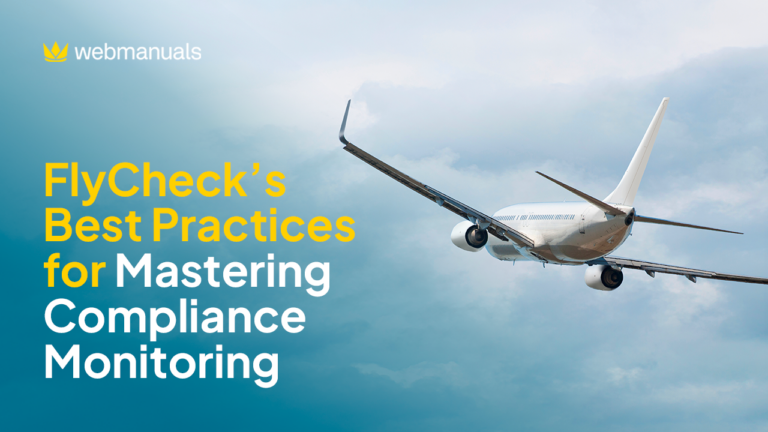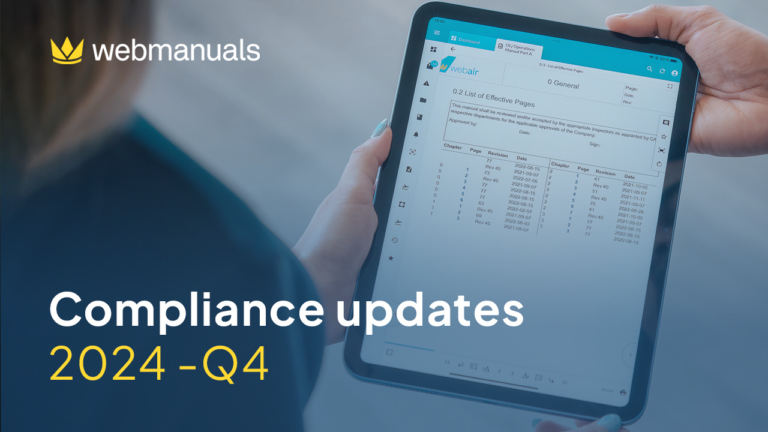“The way people interact with technology, digital tools and cloud-based systems has evolved over the past few decades,” says Julia Larsson, director of operations, EMEA, Web Manuals. “Using a single device, we’ve become accustomed to making contactless payments, joining conference calls and accessing almost anything with a QR code.
“The challenges of a post-pandemic business aviation market have made it clear that digital tools play an important role in future-proofing business strategies, driving efficiency and meeting new demand.
“While business jet activity prevailed throughout the pandemic, there are still steps being taken to implement new technology. For example, some operators have introduced new online booking platforms for passengers, or installed inflight connectivity systems to enable data transfers between air and ground.
“But innovation doesn’t have to be defined by big investments or costly hardware, it can be as simple as incorporating a more advanced document management system. As operators navigate a changing industry landscape and welcome new customers, keeping up to date with regulatory changes can be a time-consuming task.
“Business jet operators need to adhere to the same safety rules as commercial airlines. For operators in Europe, this includes regulations issued by EASA, an organisation that recognises the importance of digital transformation. From December 2022, it revised its Part 145 safety requirement. The new issue comes with a two year transition period and states that maintenance companies are now required to implement a safety management system (SMS) to incorporate thorough hazard identification, risk management and safety assurance processes.
“The growing need to digitalise, highlighted by EASA, reflects the importance of using an online system that avoids the inefficiencies that come with working from paper documentation. For years to come, digitally managing safety and compliance will likely become an increasingly critical demand for business jet operators.
“Digital documentation systems condense all regulatory information, as well as operational and safety manuals, into one accessible place. Moving to a paperless platform brings about significant time and cost savings, while also ensuring that services operate as efficiently as possible.
“With digitalisation, what was once a laborious task for a dedicated admin manager or team of people – managing the thousands of pages of an entire manuals library to ensure the revision control and re-distribution of the document – is now a fast and seamless operation. In the past, all documentation was created using a word processing tool, but by implementing a digital platform, modifications can be made at the touch of a button while keeping the document revision in good order, and then shared immediately. As a result, staff can focus on other areas of the business operation, rather than investing too much time preparing and organising paper manuals.
“Improved regulatory compliance and flight safety is another benefit. It ensures that complying with the very latest regulations is as simple as possible. There is a constant plethora of new regulations and these can quickly outdate operation manuals, no matter how recently they were updated. Being able to modify them as soon as a new regulation or standard is introduced is an extremely beneficial practice.
“Business aviation is currently under growing pressure to operate more responsibly. Sustainability initiatives such as the use of SAF and off-setting programmes are already working to cut back on carbon emissions, but advancing technologies such as the development of eVTOL aircraft will be game-changing for many areas of the industry. While these are still decades from commercialisation, the digital groundwork is well underway.
“For eVTOL vehicles to become commercially viable, they must receive aircraft certification from regulatory bodies such as the FAA. When dealing with something new that cannot be regulated under standard regulations, gaining certification can be a complicated mission for manufacturers. Therefore, digital compliance libraries are likely to play a crucial role in supporting the development of eVTOLs by summarising new regulatory information into a singular tool. Not only simplifying the complexity of compliance, but further aligning with the industry’s dedication to electrification, reducing paper waste and edging towards a digital future.
“Digitalisation will continue to shape the business aviation industry and how it operates. Implementing the correct digital tools that simplify the day-to-day operation will lay a solid foundation for digital growth. As the aviation landscape becomes increasingly complex, these foundations will allow operators to face new challenges and opportunities head-first.”




